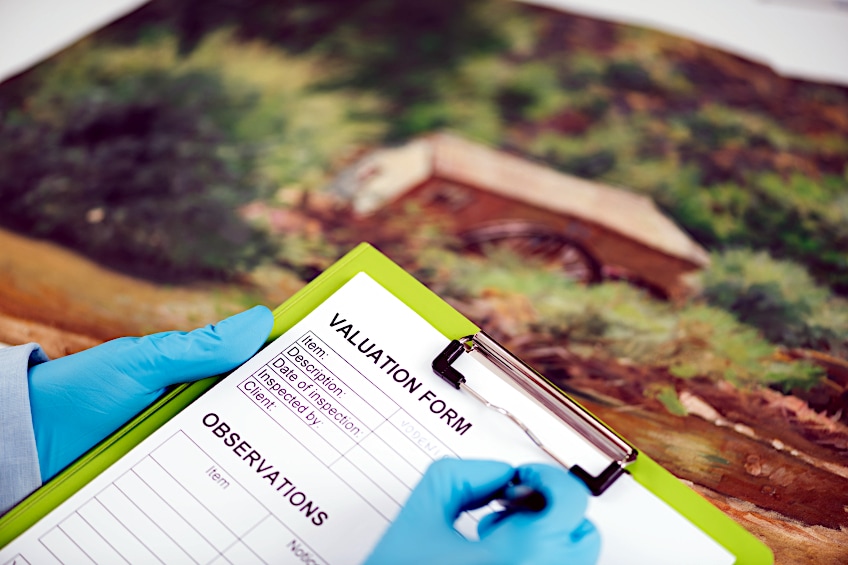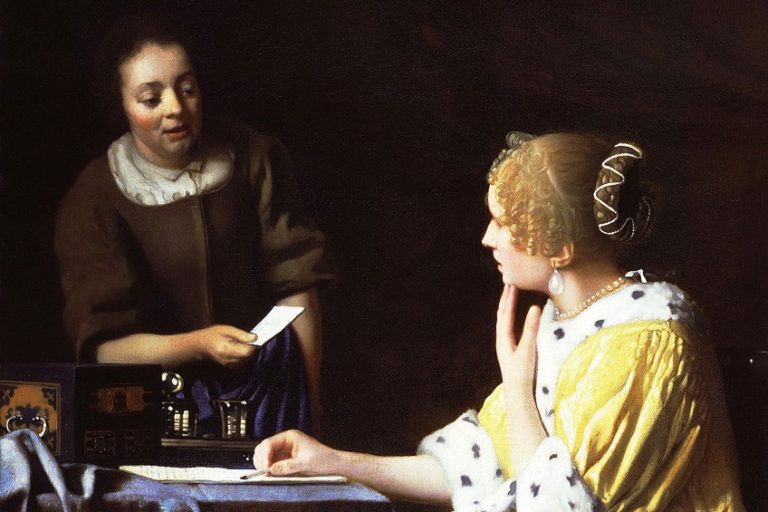How to Make an Artist Signature and Sign Your Paintings – A Guide
Although many artists resist or struggle to sign their artworks, it is an important step to consider when you want to sell your work. In this article, we will look at how to make an artist’s signature and sign your paintings. We will look at various artist signature examples on art, discuss the use of an artist signatures generator, and consider other art signature ideas involved in signing your artwork.
How to Make an Artist Signature and Sign Your Paintings
Artist signatures, websites, business cards, social media, and exhibition texts are all part of the professional practice part of being an artist. Investing extra time in research and developing these support materials is what makes an artist a professional artist versus an artist that practices as a hobby.
Artist signatures are often what define a piece of art as ready to be sold. It indicates the artist as the owner of the art idea and the creator of the final product.
An artist’s signature on art also acts as a kind of business card for the artist, as viewers might start recognizing an artist’s signature and associating that artist with certain galleries, themes, styles, and subject matter.

An artist’s signature can, therefore, promote the artist as well as add to the professional integrity of their work. In terms of signing two-dimensional work, such as paintings, drawings, prints, and photographs, this is true and makes sense.
However, three-dimensional work like sculpture, installation, or textile art complicates the rationale of signing your work. And, non-physical artworks such as sound art and performance art further brings into question the importance of all artists needing artists’ signatures.
For this article, we will focus mainly on how to make an artist’s signature and sign your paintings (with one sculptural example discussed to illustrate how an artist’s signature can add to the conceptual reasoning of an artwork). The points discussed in this article can, therefore, mostly be applied to any physical, two-dimensional work, but should still be interesting for any kind of artist to consider.
Is an Artist’s Signature Important?
If an art piece is signed well, the artist’s signature should almost completely go unnoticed. However, if an art piece is not signed, it is often noticed and talked about by the viewers of the art piece. Most individuals in the world understand the general rule that there should be an artist’s signature on a painting and will often speculate reasons why an artist would choose not to sign their work.
Artists are regular rule breakers. This fact is reflected in the inconsistent ways artists mark their work as theirs.

Whether they are scared a signature might ruin their art piece, distract from it, or simply choose to sign the artwork in an inconspicuous place, the decision of how and where to sign your art is very personal. In this section, we will look at a few reasons why an artist’s signature on a painting, for example, can add to your artwork.
Recognizability and Value
The interest created around the mystery behind an unsigned art piece could be good publicity for an artist. Still, if their artwork is not signed, it is not recognizable. This brings us to an important positive quality when it comes to signing your art: recognizability. Artworks are often recognized and valued for an artist’s achievements, knowability, and career trajectory.
If the artwork is signed, it first, affirms that the artist who claims authorship did, in fact, create the piece. Secondly, it affirms the value of the piece in relation to the value the artist has in the art world.

This fact often makes artists rebellious when it comes to the signing of their work, as they want the art piece to be valued by itself and not in connection to what they have achieved. Unfortunately, not signing your artwork could lead to investors being reluctant to purchase your art pieces. They often want the artist to be recognizable at first glance, as it adds credibility and status to the work.
A certificate of authentication could be a workaround if an artist refuses to sign their work, but they must understand that they risk losing exposure and recognizability.
Brand Identity
Your artist’s signature can add to the aesthetic recognizability of your work. In the current art market, which encourages artists to have a social media presence as well as an extensive website or online portfolio, the artist’s brand often contributes to the success of the artist.
If your website, social media, artist signature, business cards and so on all have the same visual identity, your audience and potential buyers will see that you are stable and consistent in the way you show up in the world.
You can also consider that if you want to have an artist name (like a stage name for musicians), a unique artist signature could introduce this name to the world. Your website, social media, and other supporting materials could then strengthen the integrity of this “new” name.
Conceptual Credibility
Every mark an artist makes on a canvas, piece of paper or board can contribute to or take away from the art piece. When we consider an artist’s signatures on art as part of the artwork and not separate, it can add to the aesthetic experience of viewing the work.
It can even add to the conceptual reasoning of the artwork.
Think, for example, of the famous Fountain (1917) by Dadaist Marcel Duchamp. This ready-made artwork, consisting of a urinal, was more significant and one could even say, was made an artwork by the artist scribbling the signature, “R. Mutt, 1917” onto it. Duchamp bought the urinal and simply placed it on its flat side on a pedestal before signing it with a fake name.

In this case, the artist’s signature (being a made-up name) did not add to the value or recognizability of the artwork. The fake signature was used by the artist to comment on the absurdity of the art world at the time and the presidents they held up around what made something art or not.
By signing the ready-made object, Duchamp was saying, “now that it is signed (no matter what the name) and put on display, it is art.”
This concept was fundamental to his work as an artist and illustrated how his philosophies and reasonings behind his art could be expressed through the signing of his artwork. If you are considering signing your work, it could be interesting to consider how your artist’s signatures on art add to the message of the piece. If there is a specific philosophy that is key to your work, you could ask yourself how your artist’s signature expresses this belief.
Art Signature Ideas
On the most basic level, an artist’s signature could consist of your initials and surname, could be your first name, or an artist name you are committed to. Because you will have to commit to a signature and stick to it, it could be wise to consider the following art signature ideas.
Research
When considering how to sign a painting, for example, it is always helpful to look at artists’ signature examples. Google your favorite painters and compare the way they sign their paintings. It is also important to consider artists that work in a similar style, subject matter, medium, and market as you when you research artists’ signature examples.
Read about the reseasons artists sign their work the way they do.

You can compare artists that work with their given names and artists that adopt new names for their art practice. Here, it is helpful to read about what art critics, collectors, and gallerists have to say about signing your work, as it involved the professional presentability of your work.
Experiment and Compare
If a painting is signed incorrectly, it can take away from the artwork. But what is the “correct” way to sign a painting? Our advice would be to experiment as much as possible. When you are exploring how to sign a painting, you could take a picture of your unsigned, finished painting and generate a few different artist signatures on photoshop.
You could also print a few hard copies of your paintings and sign them by hand. This way, you can put them up in your studio and compare them physically.
You can use a few paintings done by yourself that are slightly different to do these comparisons. For example, consider three artworks that are different in theme, orientation, and medium use. Print three copies of each and sign each set of three with a different signature design.
Put the paintings up in your studio and stand more or less three meters away to consider which signature works.
Where and How to Sign Your Art
An artist’s signature on a painting should melt into the painting, to form part of the whole. It is, therefore, always a good idea to try to paint your signature onto your painting in the same medium and color palette. Artists often choose to use a small flat or round brush when they sign their work.
If you use an impasto technique, you can wait until the entire painting is dry before signing your artist’s signature on a painting. Or, like Van Gogh, you can scratch your name into the wet paint.
Sculptures are often signed at the bottom of the work, or the signature is scratched into the piece to form part of the textures and composition. You will also have to make different models and compare them to each other when deciding how to sign three-dimensional artwork.

Paintings are generally signed by the artist painting their signature in the right bottom corner of the painting. That being said, consider each painting a unique experience and take the composition, color palette, and personal style into account. If you choose to work with a bulky signature, make sure it still blends into the composition. If you want to have a small signature, make sure it is readable and that you will be able to create it with paint and a brush.
Signing a painting once it is completed is not the only way to go about marking your work.

It could be a good idea to experiment with signing your paintings as you paint. This way the signature will form part of the composition and will easily integrate into the whole experience of the painting. If you struggle with finishing your artwork or have difficulty knowing when to stop, a signature could help you step away when it is necessary. Think of your artworks as reaching a “sweet spot” instead of a finish “line”. This way you can recognize that an artwork can have multiple sweet spots and that you can stop chasing them when you have reached a place where the work feels satisfactory to you.
Signing the work then, once you have decided it is good enough (for the present moment), will help you to finish the process and walk away.
Other Ways to Sign Your Art
How to make an artist’s signature and sign your paintings can be a creative act. If you are worried about not being able to consistently reproduce the same signature, you could have a stamp-custom made for your practice.
This way, you can easily stamp any two-dimensional work, as well as paperwork and thank you letters to your buyers.
Some artists get creative with their artist signatures and create wax stamps on their paintings. This will make your signature stand out, as it will be three-dimensional and in a different material. However, if it adds to your brand, and concept and you are committed to it, can add to the recognizability as well as the uniqueness of your work.
Artist Signatures Generator
We can discuss the pros and cons of signing your art, but how and if you decide to sign your artwork, is up to you. That being said, it is very important to understand that once you have decided on a signature, you should be consistent and keep to the one you have decided on.
Changing your artist signature too often (or even changing it at all) could take away all the positive contributions it makes to your work, like value credibility, recognizability, and brand identity.
For most artists, the problem is still designing a unique artist signature that will add to your artwork instead of taking it away from it. It might be a good idea to use an artist’s signature generator to compare different styles. There are multiple free artist signature generators available on Google.
After you have typed in your name, initials, surname, or artist name into the artist signatures generator, you can choose your top five artist signature examples.
Sketching your favorite out a few times in your visual diary and doing the print-out comparing exercise exampled a lot could be a great idea. Use pencils, ink, paint, and any other medium possible to make sure you can recreate it with relative accuracy in different styles of artmaking.
In the world of modern art, there is no real right or wrong way to do anything. How to make an artist’s signature and sign your paintings is up to you. Some artists decide to sign their paintings, others sign the back, and some artists spend extra time to create a very unique artist signature. However, it is important to consider how your artwork will be identified as yours, finished and authentic. It is always a good idea to do research when you consider professional practice issues and compare the decisions of other artists when it comes to developing an artist’s signatures.
Frequently Asked Questions
Why Don’t Some Artists Sign Their Paintings?
Each artist might have a personal reason for signing or not signing their art. Some artists feel like a signature distracts from the painting itself. Others might want to challenge the idea that the artwork is only considered finished once it is signed. Not signing a painting can, therefore, state that the art piece is forever in process and that no finished product is attainable in the world of art.
Is It Okay to Sign the Back of My Paintings?
Signing the back of your paintings will still ensure that it is linked to you as the author of the work. It could comfort investors, as it will be recognizably done by you and, therefore, make reselling easier. That being said, do consider that an artist’s signature acts as a business card and you could lose out on exposure and sales if viewers cannot see who created that work.
How Much Time Should I Spend Developing My Artist Signature?
Having an artist’s signature has definite benefits, however, if signing your work has become a block to your creative expression you need to reconsider what the focus of your practice is. In the end, expressing, creating, and finishing artworks are much more important than why, how, and where to sign your art. If you find the exploration of developing an artist’s signature exciting, then, by all means, go through the process until you are happy. But if not having an artist’s signature is stopping you from producing or sharing your work, simply sign your initials and/or surname and move on.
Nicolene Burger is a South African multi-media artist, working primarily in oil paint and performance art. She received her BA (Visual Arts) from Stellenbosch University in 2017. In 2018, Burger showed in Masan, South Korea as part of the Rhizome Artist Residency. She was selected to take part in the 2019 ICA Live Art Workshop, receiving training from art experts all around the world. In 2019 Burger opened her first solo exhibition of paintings titled, Painted Mantras, at GUS Gallery and facilitated a group collaboration project titled, Take Flight, selected to be part of Infecting the City Live Art Festival. At the moment, Nicolene is completing a practice-based master’s degree in Theatre and Performance at the University of Cape Town.
In 2020, Nicolene created a series of ZOOM performances with Lumkile Mzayiya called, Evoked?. These performances led her to create exclusive performances from her home in 2021 to accommodate the mid-pandemic audience. She also started focusing more on the sustainability of creative practices in the last 3 years and now offers creative coaching sessions to artists of all kinds. By sharing what she has learned from a 10-year practice, Burger hopes to relay more directly the sense of vulnerability with which she makes art and the core belief to her practice: Art is an immensely important and powerful bridge of communication that can offer understanding, healing and connection.
Nicolene writes our blog posts on art history with an emphasis on renowned artists and contemporary art. She also writes in the field of art industry. Her extensive artistic background and her studies in Fine and Studio Arts contribute to her expertise in the field.
Learn more about Nicolene Burger and the Art in Context Team.
Cite this Article
Nicolene, Burger, “How to Make an Artist Signature and Sign Your Paintings – A Guide.” Art in Context. September 28, 2022. URL: https://artincontext.org/how-to-make-an-artist-signature-and-sign-your-paintings/
Burger, N. (2022, 28 September). How to Make an Artist Signature and Sign Your Paintings – A Guide. Art in Context. https://artincontext.org/how-to-make-an-artist-signature-and-sign-your-paintings/
Burger, Nicolene. “How to Make an Artist Signature and Sign Your Paintings – A Guide.” Art in Context, September 28, 2022. https://artincontext.org/how-to-make-an-artist-signature-and-sign-your-paintings/.











